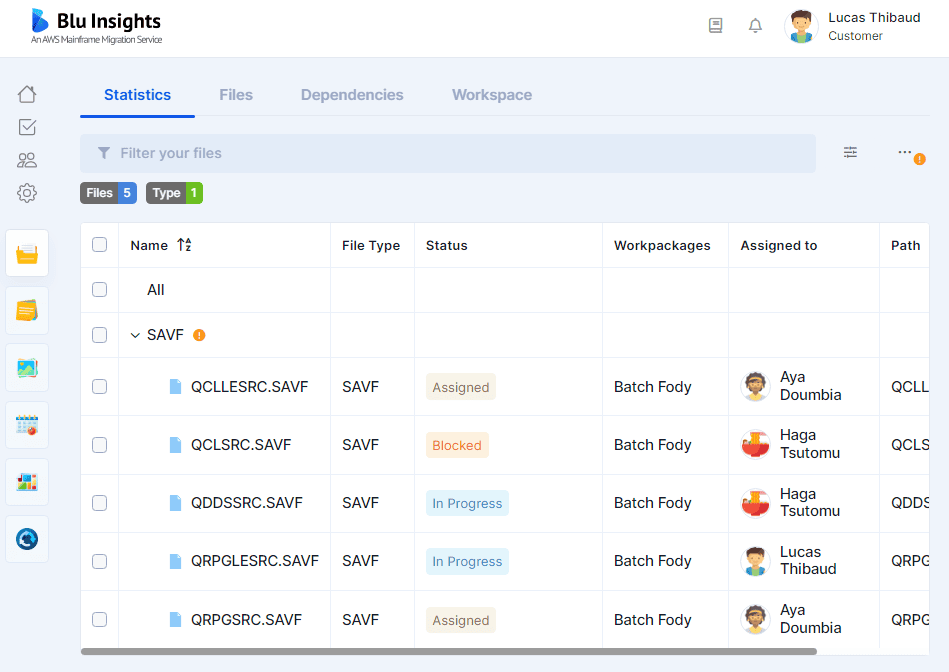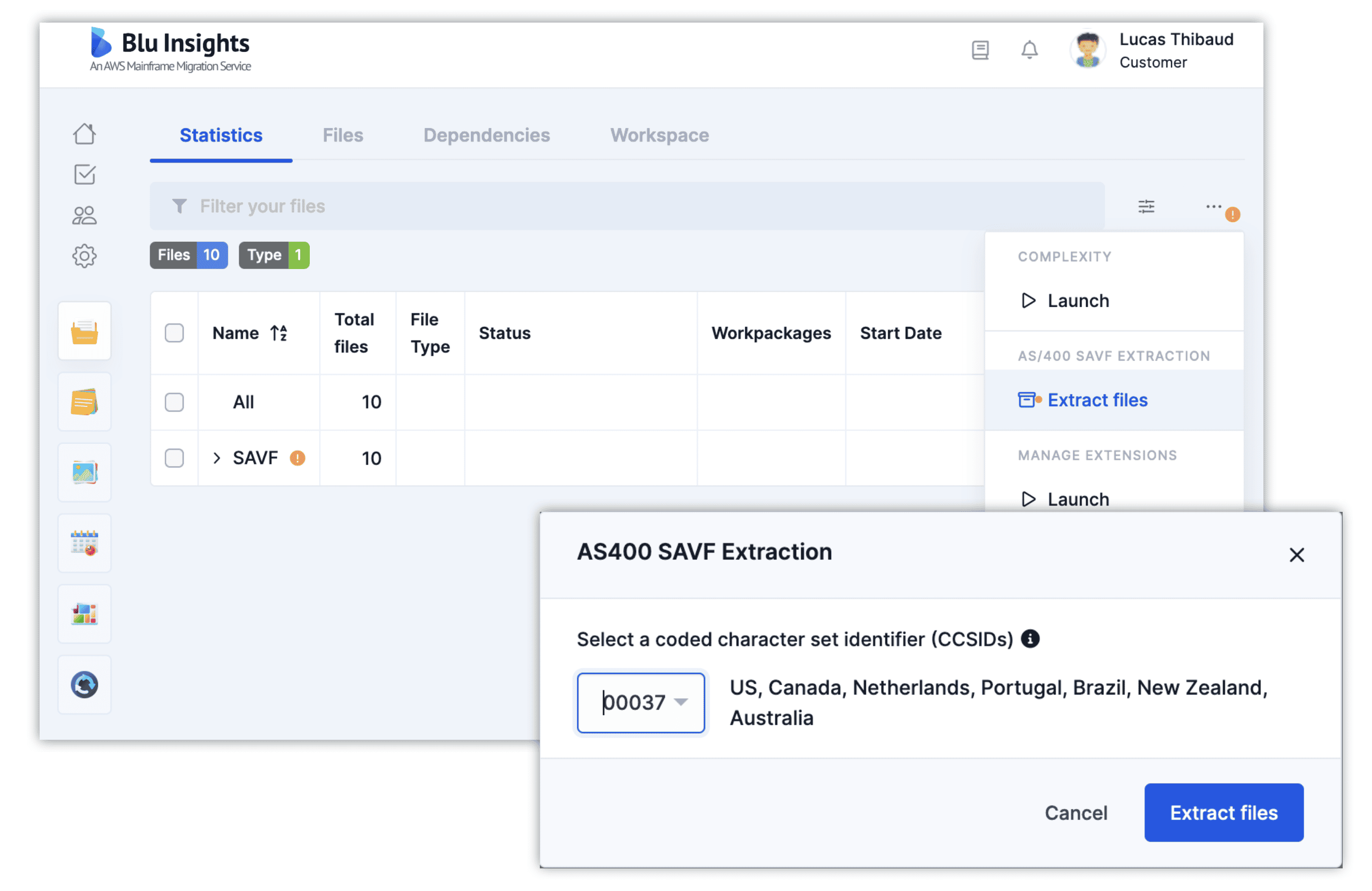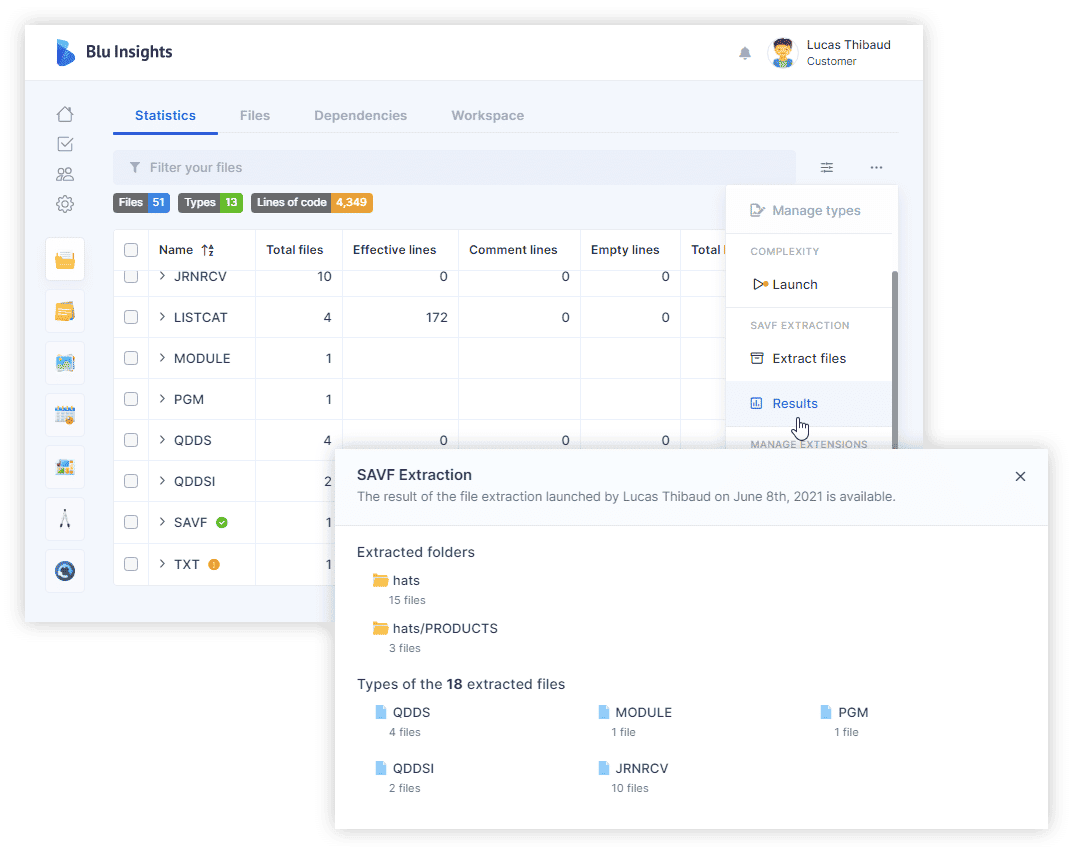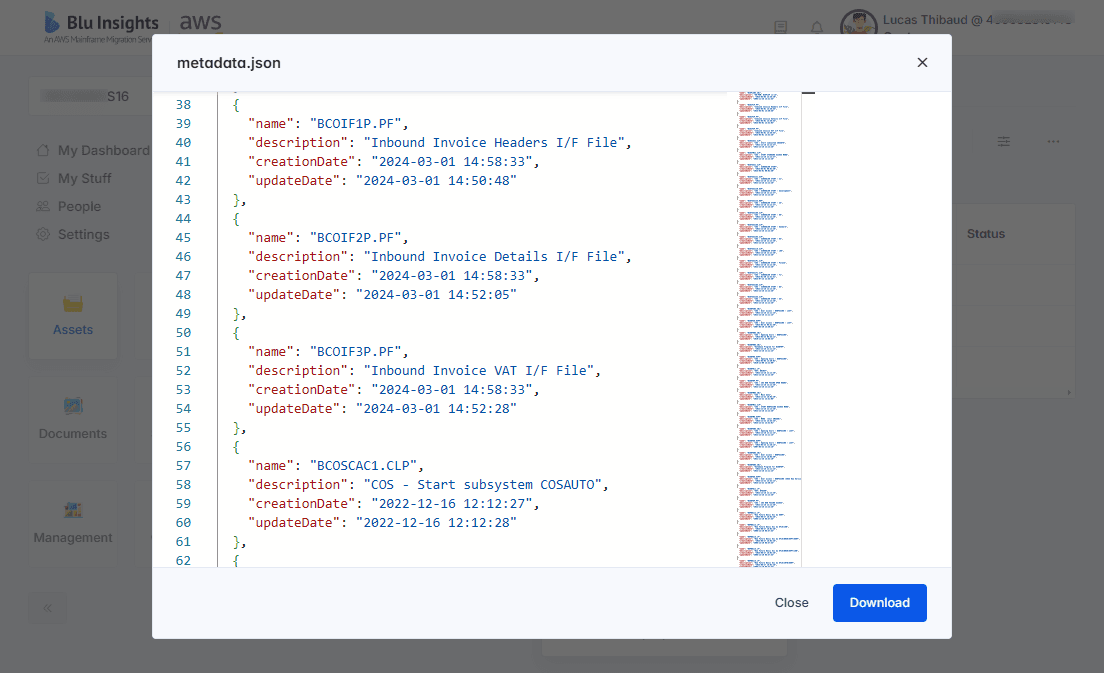AS/400 SAVF Extraction
SAVF Extraction feature allows to extract SAVF format into source code (PF, LF, DSPF, PRTF, RPG, RPGLE, CBL, CBLLE, CL, CLLE… files) in order to explore it easily. The SAVF should not be compressed (mode namely *HIGH).
This feature is visible only when files with SAVF extension have been detected in the uploaded codebase.
SAVF files are detected at the project creation. They are indicated by an orange exclamation mark asking the user to click on the upper-right menu in order to launch the Extraction.

Before extracting files, the user must select the relevant Coded character set identifiers (CCSID). The default value is “00037”, corresponding to “US, Canada, Netherlands, Portugal, Brazil, New Zealand, Australia”. If in doubt, keep this default value.
The complete CCSID list is available on the IBM website.

The extraction takes a few minutes depending on the number and size of the files to be extracted. Once done, the user is notified by email, the orange icon is replaced by a green one, and the project metrics are updated. A summary of the extraction is also available on the “…” menu.

Besides the source files, Blu Insights creates an additional file named "metadata.json" for each extracted SAVF file. This file contains metadata information about each source file stored within the SAVF file, including its name, description, creation date, and update date:: The metadata file is especially useful when we have different versions of the same SAVF file, and we want to find out which source files have been changed between these versions. We can do this by comparing the metadata files and easily identify which source files have been added, removed, or modified across the different versions of the SAVF file.
The metadata file is especially useful when we have different versions of the same SAVF file, and we want to find out which source files have been changed between these versions. We can do this by comparing the metadata files and easily identify which source files have been added, removed, or modified across the different versions of the SAVF file.
The extraction can be relaunched if needed.
NB: AS/400 (iSeries) source code can also be imported into AWS Blu Insights as textual files within the corresponding extensions (e.g. PF, LF, DSPF, PRTF, RPG, RPGLE, CBL, CBLLE, CL, CLLE…).